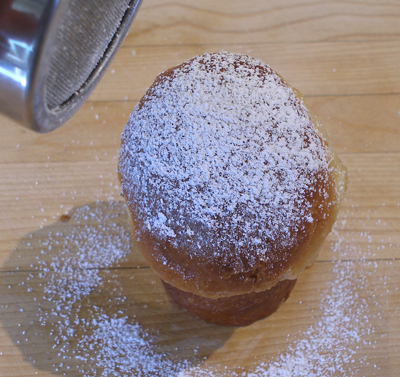Recipe by Sarah Phillips and Kelly Hong; Food styling and photos by Kelly Hong © 3-1-2013 Sarah Phillips CraftyBaking.com
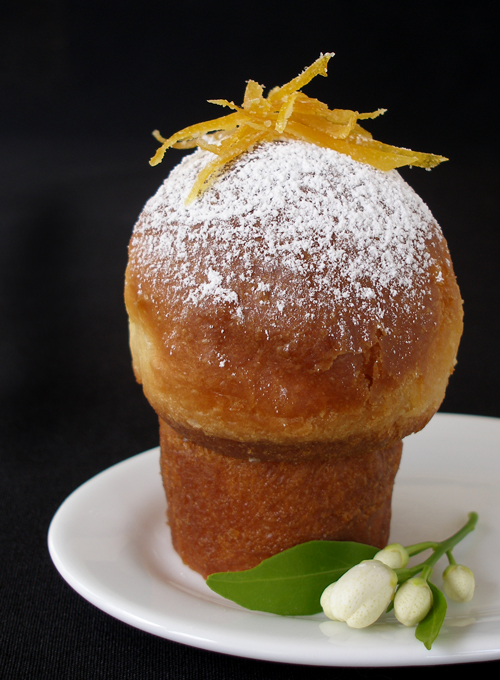
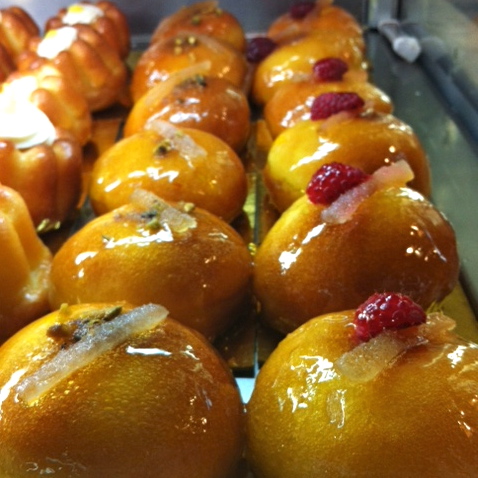
A rum baba (also known as baba al rhum, baba au rhum, and rhum baba), is a sweet yeasted cake saturated in liquor, most often rum. Invented in Paris and popular in Naples, Italy, it is often filled with whipped cream, crema pasticciera (custard cream or pastry cream), or cannoli cream. Sometimes it is simply oozing with syrup. This recipe soaks the cakes in vibrant limoncello syrup, and you have the option of filling them with vanilla pastry cream.
The dough for baba is even richer than that for brioche, and includes eggs, milk, and butter. See our method below for making the dough quickly and easily. Traditionally, babas are baked in individual baba molds (which are slightly tapered cylinders about a 2-inches tall). They can also be baked in larger molds, similar to Bundt cake pans. If you don’t have baba molds, you can bake the cakes in regular muffin pans, as I do here, or use two small Bundt cake pans.
BREAD RECIPE HELP
Using the food processor to make the dough is the quickest and easiest method I’ve found. When kneading and cutting the dough, be sure to flour the work surface well, because the dough is very soft and sticky. I find that using a bench scraper helps with both tasks.
INGREDIENTS
Baba Dough:
2 teaspoons active dry yeast
2 tablespoons warm water; about 100 to 110 degrees F, measured with an instant read thermometer
2 1/4 cups unbleached all-purpose flour, spoon into measuring cup and level to rim
2 tablespoons sugar
1 pinch salt
4 large eggs, lightly beaten
1 stick (8 tablespoons, 1/2 cup, or 1/4 lb.) unsalted butter, softened
Limoncello Soaking Syrup:
3 cups water
3 cups sugar
1 cup limoncello ; purchase or make in advance
1 cup lemon juice, freshly squeezed
Garnish:
1 recipe Candied Lemon Peel
Filling:
1 recipe Pastry Cream
INSTRUCTIONS
Dough:
1. Dissolve the yeast in 2 tablespoons warm water in a small bowl and let it sit for several minutes to start to bubble.
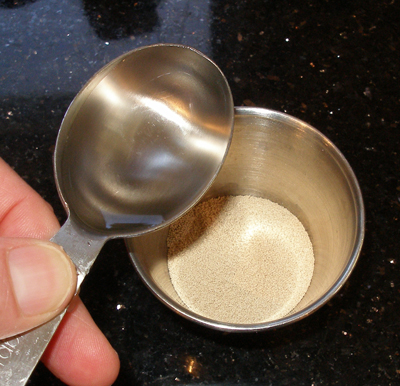
2. Put the flour, salt and sugar in the bowl of the food processor and run the machine for a few seconds to blend the dry ingredients.
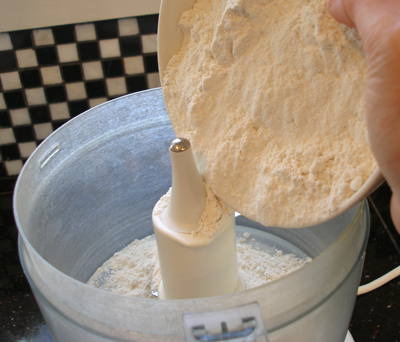
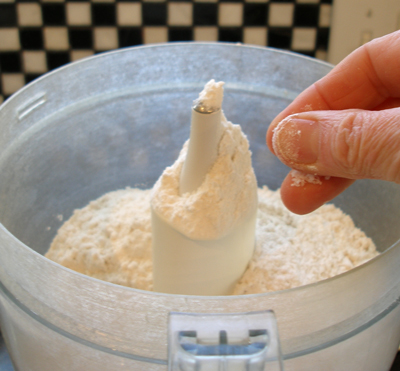
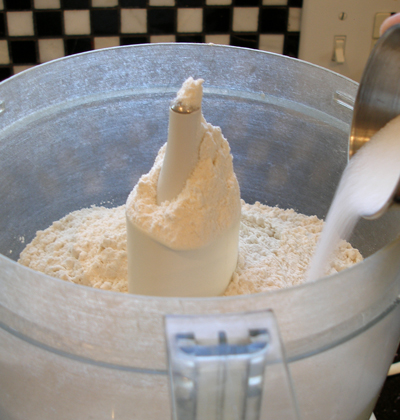
3. Mix the beaten eggs with the dissolved yeast.
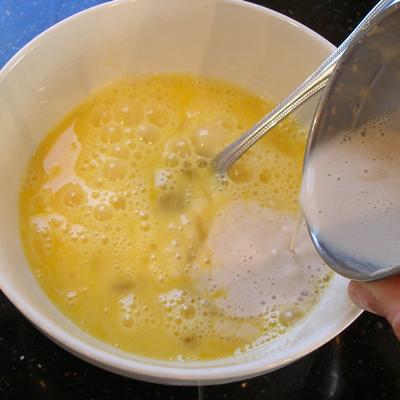
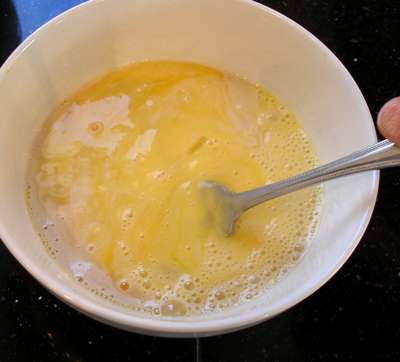
4. With the food processor running, pour all the liquid into the flour and process for 20 seconds or so.
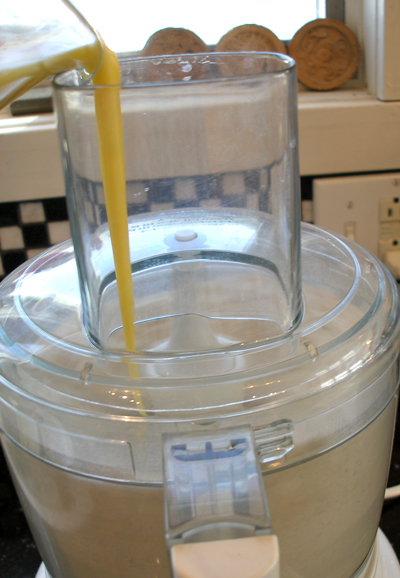
A stiff dough will gather on the blade and clean the sides of the bowl.
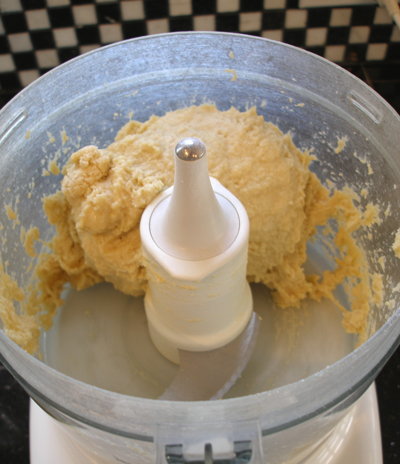
5. Now drop in the soft butter and process for another 20 to 30 seconds until it is fully incorporated.
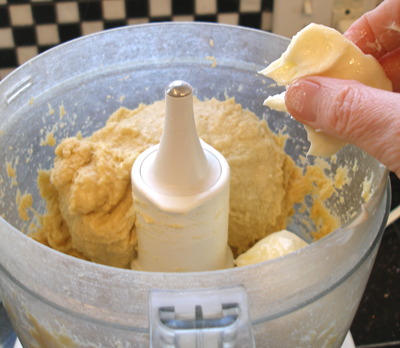
6. Turn the soft dough out onto a well-floured surface, and knead by hand briefly to form a smooth round and drop it into a lightly buttered bowl.
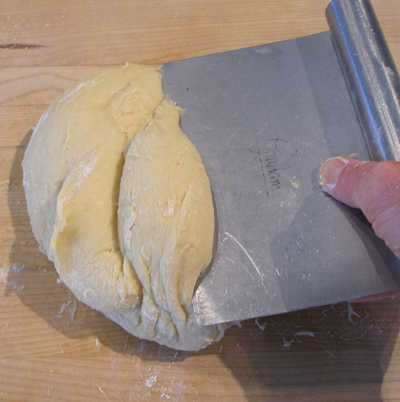
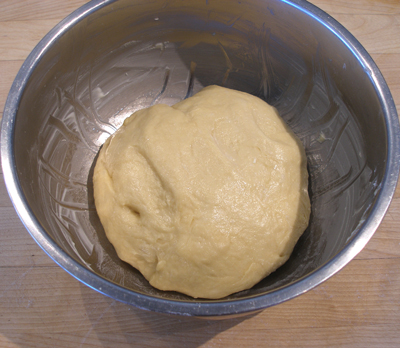
7. Cover it with plastic wrap and let the dough rise in a warm place for 30 minutes or so – it does not need to double.
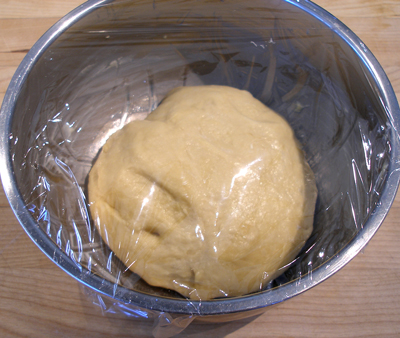
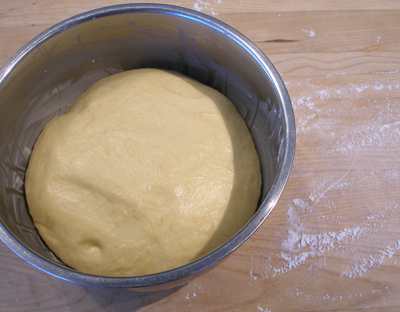
Prepare the pans. Shape the dough. Heat the oven. Bake the Babas:
1. On a well-floured surface, deflate the dough and cut it into 12 equal pieces (about 2 ounces each).
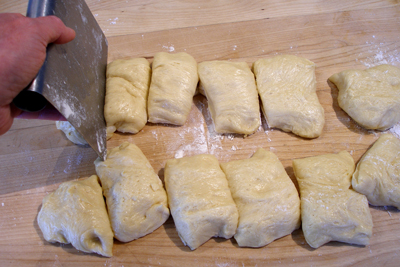
2. Roll each piece into a round to fill bundt forms. You may not need a lot of flour on th work surface when you do this.
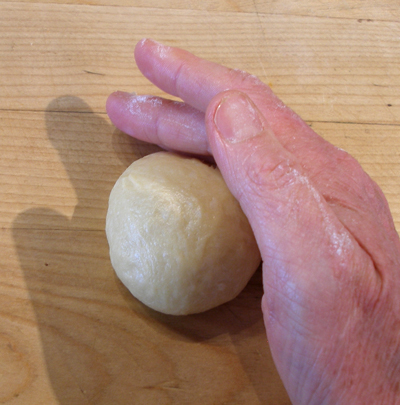
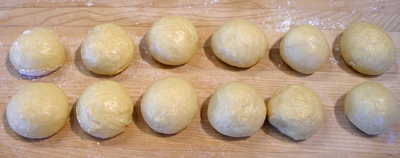
3. Butter the baba molds, and fill the molds with the rolled baba dough.
NOTE: We used
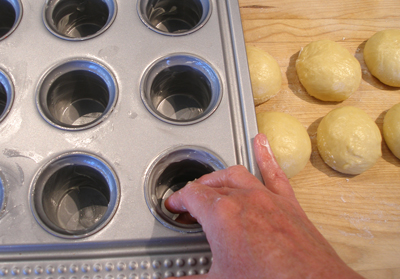
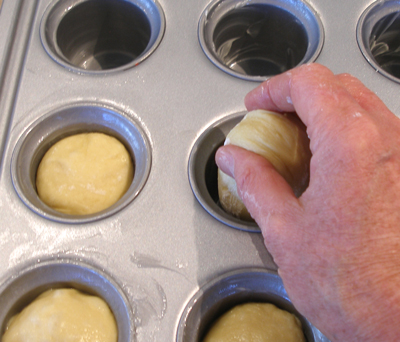
4. Cover the pan with a greased-side-down piece of plastic wrap.
Let the babas expand to fill the molds in a warm place, about 30 minutes or more.
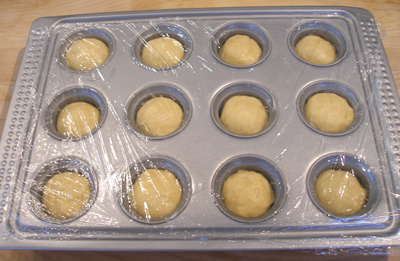
5. Meanwhile, position an oven shelf in the middle of the oven. Heat the oven to 400 degrees F.
6. Bake the babas for 15 to 20 minutes or until they are dark gold on top; shift the pans on the racks for even baking. Turn them out of the pans and cool.
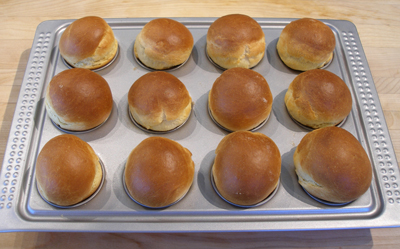
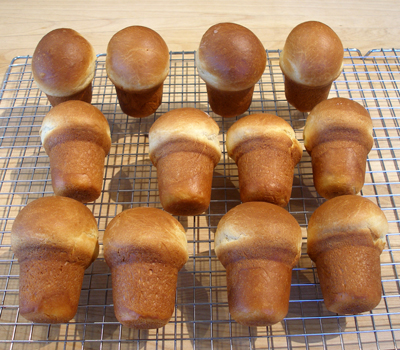
Limoncello soaking syrup:
1. Bring the water, lemon juice and sugar to a full boil in a large wide pot, add the limoncello and boil for 10 minutes.
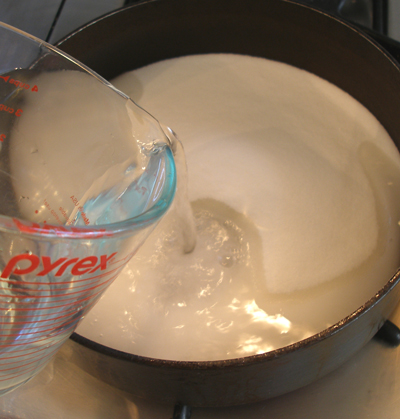
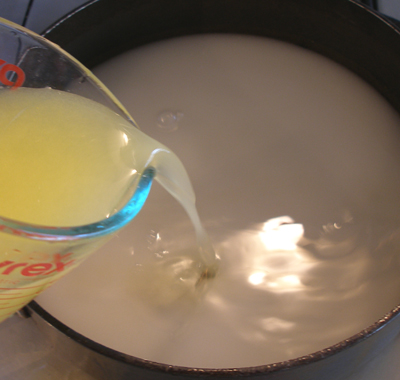
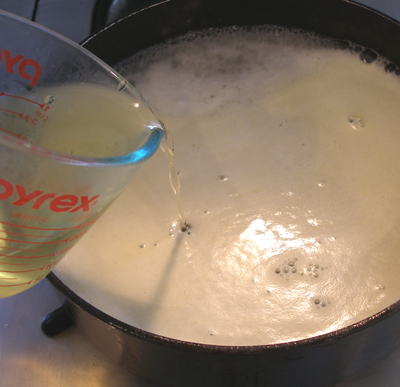
2. Turn off the heat and immediately push as many babas as will fit into the hot syrup without over-crowding them.
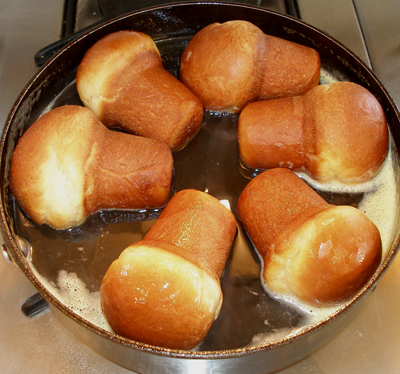
3. Soak them for 5 minutes, spoon the syrup over the tops a few times, then flip them over after 5 minutes and do the same thing.
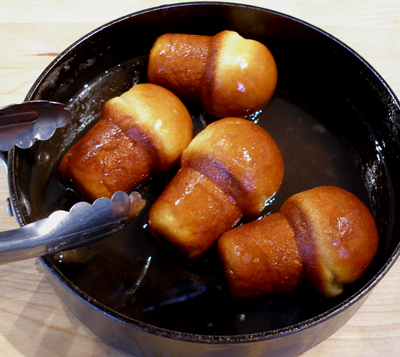
4. Remove them from the pot and drain on a wire cake rack set over a pan.
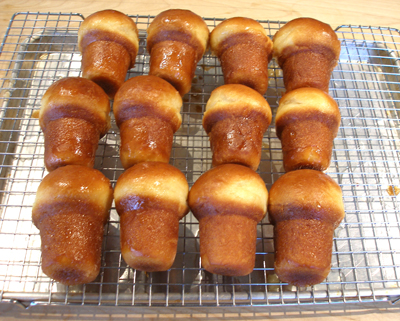
NOTE: If you have more babas to soak, heat the syrup to the boil again, then submerge another batch.
SERVE
OPTION #1: UNFILLED – Serve the soaked babas within a short time or set them in a pan, sitting in a shallow layer of syrup to stay moist. Garnish with raspberries and Candied Lemon Peel.

Photo by Sarah Phillips © Sarah Phillips CraftyBaking.com
OPTION #2: FILLED – For best results, fill them right before you serve them, within a short time of soaking and draining them.
We chose to fill ours with 1 recipe Pastry Cream, but you could also use whipped cream or even fresh lemon curd.
1. Cut the bottom of the baba off with a sharp serrated knife so the bottom is flat and level.
The baba will be very moist from the soaking syrup, so be gentle with it. WARNING: Your hands will get incredibly sticky. ![]()
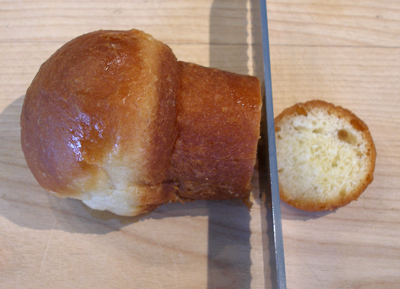
2. Cut the ‘stem’ of the baba off, right under the crown.
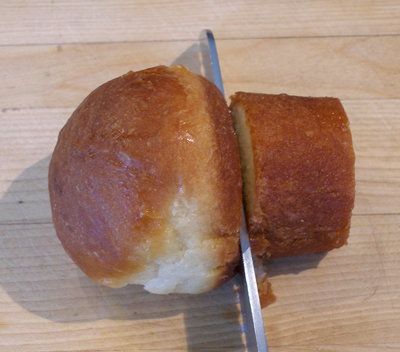
3. Use an apple corer to core out a hollow for the filling.
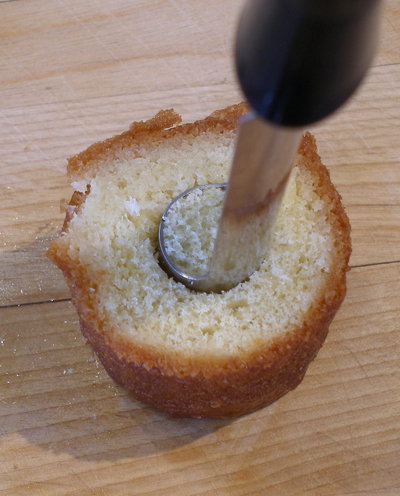
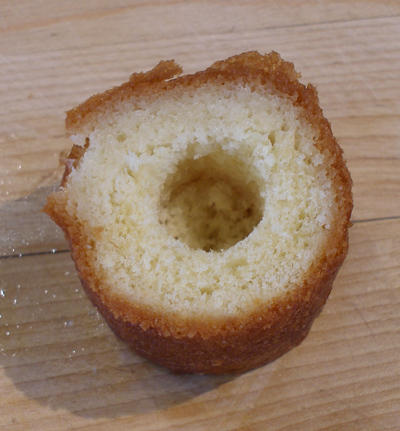
4. Take the crown of the baba in your hand, and hollow out the center as well.
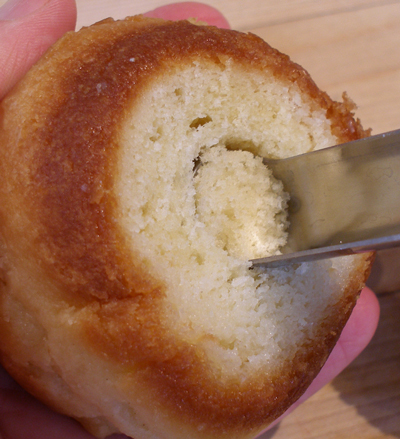
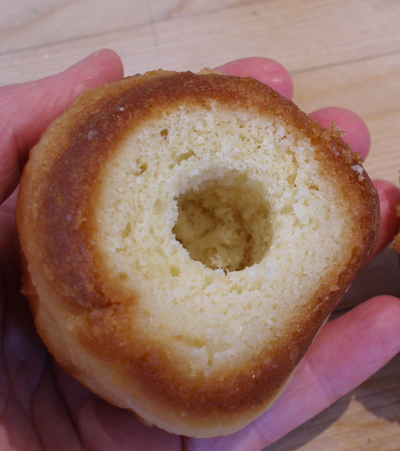
5. Fill both hollows with pastry cream using a pastry bag, then join the two halves together, matching up the top to the bottom.
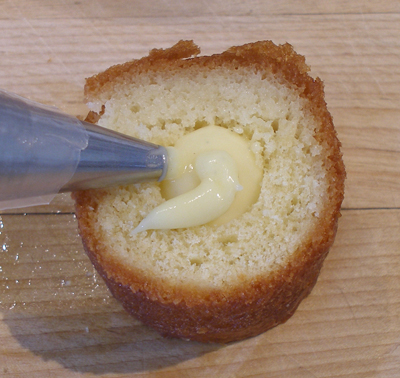
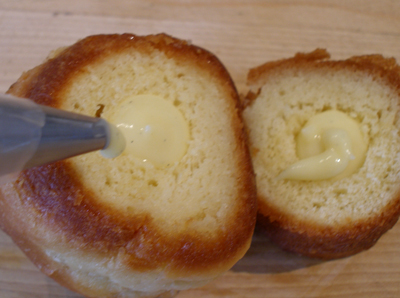
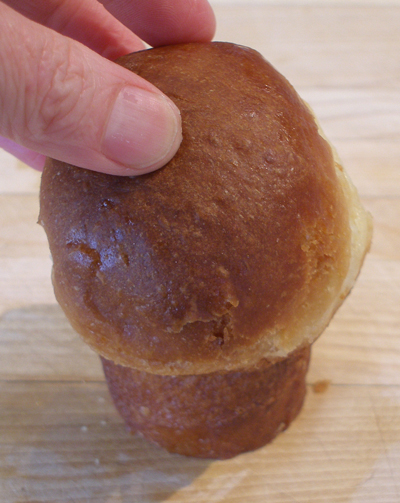
6. Sprinkle the top of the baba with powdered sugar, right before serving, and garnish with fine cut strips of candied lemon peel.
